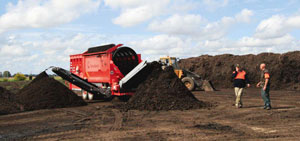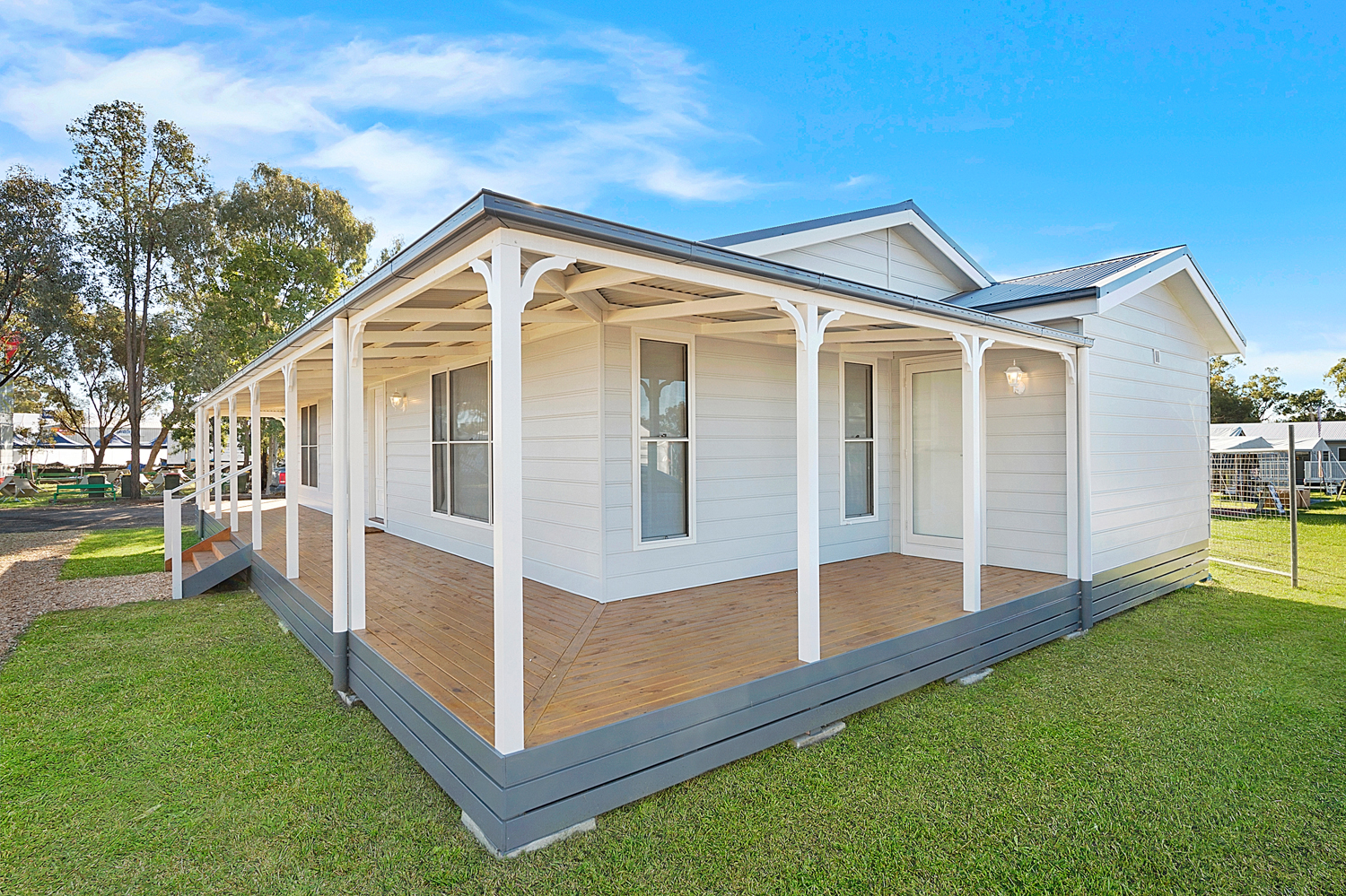Take a tour of Victoria’s most advanced composting plant, located in the Goulburn Valley
By Vasili
Recycling the right way in the garden means putting only green organics in your council bin to be collected and taken to a commercial organics recycling facility such as Western Composting Technology in the Goulburn Valley, Victoria. There, the material is shredded and made into compost, mulch and soils.
Unfortunately, though, time and time again, contaminants get mixed up with green organics, creating real issues for composting operations, which have to remove them through additional screening and extensive manual labour. “Items such as plastic, bags (of any type), cord, wire, metal and pots should not be thrown into the green bins,” says Kevin Corboy, who is in charge of the processing plant at Western Composting Technology. “These are contaminants that are constantly found in the bins. They shouldn’t be there and we spend most of our manual labour removing them from the greens before we can begin the composting process. “If people are smart enough to not throw plastic into their own compost bins, why are they throwing it into the council’s green recycling bins?” Sure enough, Kevin is not exaggerating. There were hundreds of cubic metres of green waste but all one could see was the plastic, wire, bottles and all sorts of contaminants mixed through it.
Located in the Goulburn Valley north of Shepparton, Western Composting Technology produces compost under computer-controlled conditions, using “tunnel” technology similar to that used by 600 or so installations throughout Europe. This technology is the first of its kind in Victoria, capable of processing up to 12,000 tonnes of green organics each year, producing 15,000 cubic metres of high-quality compost.
How it works
As with other composting facilities, kerbside green waste is received then shredded for consistency, but rather than stockpile the green waste in long windrows and leave it for weeks on end to turn into compost, at WCT the green organics are loaded into compost tunnels. There are three tunnels, each 25 metres long with a storage capacity of 350 cubic metres. Once a tunnel is filled, the loading door is secured tight and the tunnel is then automatically controlled and monitored by a computer-based control system. Air is forced through the trenches along the concrete base to maintain oxygen levels while water is added through an overhead watering system to help maintain the correct moisture level for efficient microbial activity.
The composting process is very similar to that which happens in your backyard compost bin, but obviously you don’t have computerised technology to help control the moisture and oxygen levels and speed up the compost-making process. That’s where a little bit of extra monitoring of the bin and manual labour comes into play to help maintain that optimum level for compost making. “Our process takes between two and three weeks inside the tunnels and a further three to four weeks outside the tunnels (six weeks all up) compared with a minimum of 16 weeks with other technologies, such as open windrow or aerated static piles,” says Kevin. “It obviously is the way of the future — no smelly tip sites and open windrows and the process of producing compost is so much faster,” says Brian Jefferies, who designed the processing plant at Western Composting Technology.
“We don’t need expensive huge machinery like other facilities do to turn over the windrows every week, plus with the windrows system, heating is inconsistent. To obtain optimal microbial activity, which is what turns that green waste into organic compost, we need to have a constant desirable temperature and with our controlled environment that’s all done by the push of a button and monitored through our computerised system. With a windrows system, the temperature varies dramatically, making that system less efficient,” explains Brian. “Unlike with windrows systems, we don’t have any odours escaping out into the atmosphere, either. The odours are filtered through another pile of compost full of microbes that work at a lower temperature, absorbing these smells before they are released into the atmosphere.”
The take-home message
Whether you have a compost bin or just stockpiles of green organics throughout the garden, every little bit of effort you put into making compost will truly reward you with not only a cleaner environment but also a healthier lifestyle. Just imagine if every grower and family garden in the world never used a synthetic fertiliser again and instead fed their gardens with organic compost! The end product from WCT is truly amazing; they call it GV compost, which has a high water-holding capacity, is free from animal manures and, believe it or not, has a very pleasant, rich, earthy smell. It has a higher than 75 per cent level of organic matter, which definitely improves soil aeration and reduces compaction, and the best part about it all is it’s made from recycled green organics packed full of nutritional benefits for growing plants.
Using recycled mulch is a natural and eco-friendly way to improve your soil. It also reduces pests and diseases, helps your plants grow stronger and healthier and keeps weeds at bay. And let’s not forget how it can also help reduce the need for watering by up to 30 per cent. Whether you make it or buy it, let’s all help to close the loop by using certified recycled mulch, compost and soil in our gardens. Compost, dig and recycle your way to a healthier life and a healthier environment.






